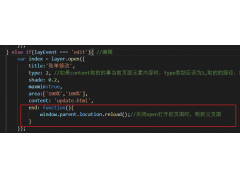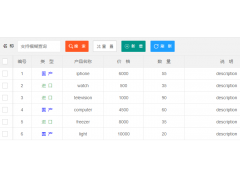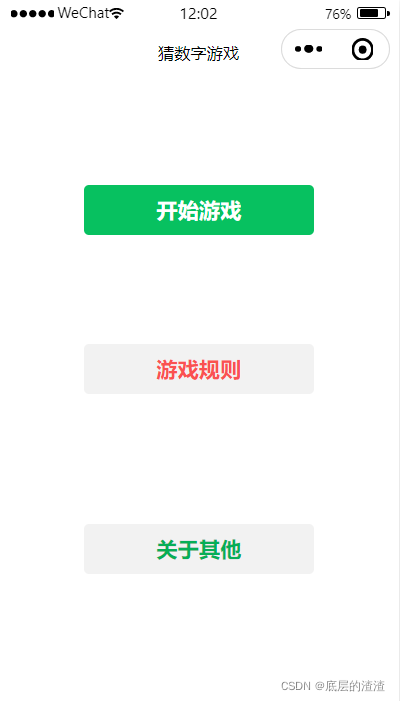How can a JSF/ICEfaces component#39;s parameters be updated immediately?(如何立即更新 JSF/ICEfaces 组件的参数?)
问题描述
I have an ICEfaces web app which contains a component with a property linked to a backing bean variable. In theory, variable value is programmatically modified, and the component sees the change and updates its appearance/properties accordingly.
However, it seems that the change in variable isn't "noticed" by the component until the end of the JSF cycle (which, from my basic understanding, is the render response phase).
The problem is, I have a long file-copy operation to perform, and I would like the the inputText component to show a periodic status update. However, since the component is only updated at the render response phase, it doesn't show any output until the Java methods have finished executing, and it shows it all changes accumulated at once.
I have tried using FacesContext.getCurrentInstance().renderResponse() and other functions, such as PushRenderer.render(String ID) to force XmlHttpRequest to initialize early, but no matter what, the appearance of the component does not change until the Java code finishes executing.
One possible solution that comes to mind is to have an invisible button somewhere that is automatically "pressed" by the bean when step 1 of the long operation completes, and by clicking it, it calls step 2, and so on and so forth. It seems like it would work, but I don't want to spend time hacking together such an inelegant solution when I would hope that there is a more elegant solution built into JSF/ICEfaces.
Am I missing something, or is resorting to ugly hacks the only way to achieve the desired behavior?
Multithreading was the missing link, in conjunction with PushRenderer and PortableRenderer (see http://wiki.icesoft.org/display/ICE/Ajax+Push+-+APIs).
I now have three threads in my backing bean- one for executing the long operation, one for polling the status, and one "main" thread for spawning the new threads and returning UI control to the client browser.
Once the main thread kicks off both execution and polling threads, it terminates and it completes the original HTTP request. My PortableRenderer is declared as PortableRender portableRenderer; and in my init() method (called by the class constructor) contains:
PushRenderer.addCurrentSession("fullFormGroup");
portableRenderer = PushRenderer.getPortableRenderer();
For the threading part, I used implements Runnable on my class, and for handling multiple threads in a single class, I followed this StackOverflow post: How to deal with multiple threads in one class?
Here's some source code. I can't reveal the explicit source code I've used, but this is a boiled-down version that doesn't reveal any confidential information. I haven't tested it, and I wrote it in gedit so it might have a syntax error or two, but it should at least get you started in the right direction.
public void init()
{
// This method is called by the constructor.
// It doesn't matter where you define the PortableRenderer, as long as it's before it's used.
PushRenderer.addCurrentSession("fullFormGroup");
portableRenderer = PushRenderer.getPortableRenderer();
}
public void someBeanMethod(ActionEvent evt)
{
// This is a backing bean method called by some UI event (e.g. clicking a button)
// Since it is part of a JSF/HTTP request, you cannot call portableRenderer.render
copyExecuting = true;
// Create a status thread and start it
Thread statusThread = new Thread(new Runnable() {
public void run() {
try {
// message and progress are both linked to components, which change on a portableRenderer.render("fullFormGroup") call
message = "Copying...";
// initiates render. Note that this cannot be called from a thread which is already part of an HTTP request
portableRenderer.render("fullFormGroup");
do {
progress = getProgress();
portableRenderer.render("fullFormGroup"); // render the updated progress
Thread.sleep(5000); // sleep for a while until it's time to poll again
} while (copyExecuting);
progress = getProgress();
message = "Finished!";
portableRenderer.render("fullFormGroup"); // push a render one last time
} catch (InterruptedException e) {
System.out.println("Child interrupted.");
}
});
statusThread.start();
// create a thread which initiates script and triggers the termination of statusThread
Thread copyThread = new Thread(new Runnable() {
public void run() {
File someBigFile = new File("/tmp/foobar/large_file.tar.gz");
scriptResult = copyFile(someBigFile); // this will take a long time, which is why we spawn a new thread
copyExecuting = false; // this will caue the statusThread's do..while loop to terminate
}
});
copyThread.start();
}
这篇关于如何立即更新 JSF/ICEfaces 组件的参数?的文章就介绍到这了,希望我们推荐的答案对大家有所帮助,也希望大家多多支持编程学习网!
本文标题为:如何立即更新 JSF/ICEfaces 组件的参数?


基础教程推荐
- 为什么我在 Vue.js 中得到 ERR_CONNECTION_TIMED_OUT? 2022-01-01
- 每次设置弹出窗口的焦点 2022-01-01
- Javascript 在多个元素上单击事件侦听器并获取目标 2022-01-01
- 什么是不使用 jQuery 的经验技术原因? 2022-01-01
- 如何在特定日期之前获取消息? 2022-01-01
- Node.js 有没有好的索引/搜索引擎? 2022-01-01
- jQuery File Upload - 如何识别所有文件何时上传 2022-01-01
- 如何使用 CSS 显示和隐藏 div? 2022-01-01
- WatchKit 支持 html 吗?有没有像 UIWebview 这样的控制器? 2022-01-01
- 如何使用sencha Touch2在单页中显示列表和其他标签 2022-01-01

















